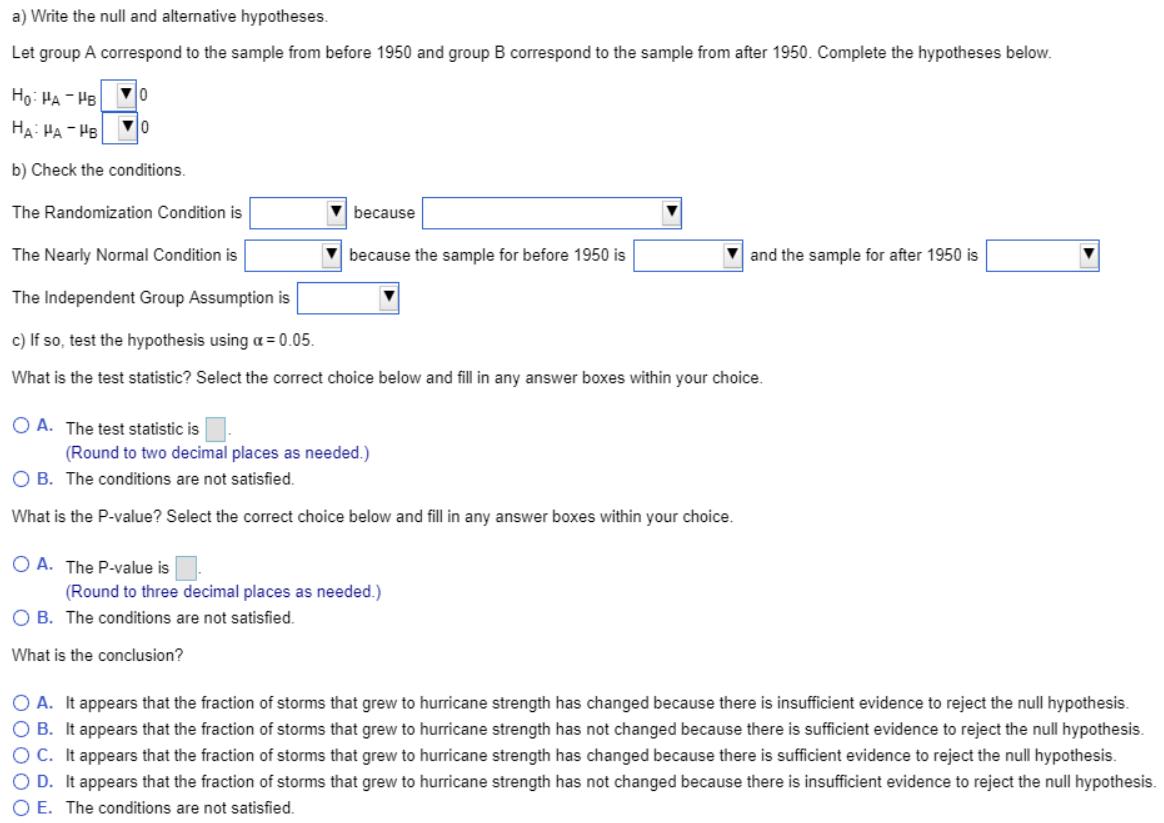Question
The data below give the fraction of named storms that grew to hurricane strength for randomly selected years before and after 1950. Has the fraction
The data below give the fraction of named storms that grew to hurricane strength for randomly selected years before and after 1950. Has the fraction of named storms that grew to hurricane strength changed? Complete parts a through c. Assume unequal variances.
Before 1950 After 1950
0.585, 0.604, 0.443, 0.546 0.334, 0.616, 0.516, 0.577, 0.324
0.638, 0.718, 0.674 0.499 0.597, 0.413, 0.613, 0.498, 0.519

a) Write the null and alternative hypotheses. Let group A correspond to the sample from before 1950 and group B correspond to the sample from after 1950. Complete the hypotheses below. Ho: HA - HB HA: HA - HB b) Check the conditions. The Randomization Condition is V because The Nearly Normal Condition is V because the sample for before 1950 is V and the sample for after 1950 is The Independent Group Assumption is c) If so, test the hypothesis using a = 0.05. What is the test statistic? Select the correct choice below and fill in any answer boxes within your choice. O A. The test statistic is (Round to two decimal places as needed.) O B. The conditions are not satisfied. What is the P-value? Select the correct choice below and fill in any answer boxes within your choice. O A. The P-value is (Round to three decimal places as needed.) O B. The conditions are not satisfied. What is the conclusion? O A. It appears that the fraction of storms that grew to hurricane strength has changed because there is insufficient evidence to reject the null hypothesis. O B. It appears that the fraction of storms that grew to hurricane strength has not changed because there is sufficient evidence to reject the null hypothesis. OC. It appears that the fraction of storms that grew to hurricane strength has changed because there is sufficient evidence to reject the null hypothesis. D. It appears that the fraction of storms that grew to hurricane strength has not changed because there is insufficient evidence to reject the null hypothesis. O E. The conditions are not satisfied.
Step by Step Solution
3.46 Rating (156 Votes )
There are 3 Steps involved in it
Step: 1
a State the hypotheses The first step is to state the null hypothesis and an alternative hypothesis ...
Get Instant Access to Expert-Tailored Solutions
See step-by-step solutions with expert insights and AI powered tools for academic success
Step: 2

Step: 3

Document Format ( 2 attachments)
635d9c81a622f_177266.pdf
180 KBs PDF File
635d9c81a622f_177266.docx
120 KBs Word File
Ace Your Homework with AI
Get the answers you need in no time with our AI-driven, step-by-step assistance
Get Started


